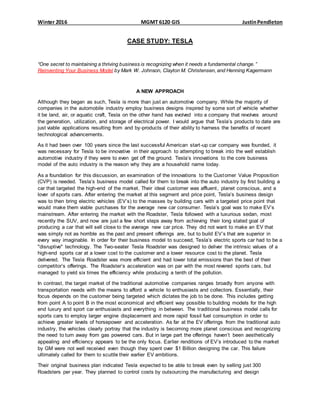Tesla has innovated the automotive business model by focusing on electric power generation, storage and use rather than vehicle production alone. It entered the high-end market with the Tesla Roadster to prove electric vehicles could outperform gas cars, then plans to make EVs mainstream through cheaper models. However, profits have eluded Tesla due to high R&D costs and delays. For long-term success, Tesla may need to shift focus from mass market cars to expanding its profitable battery business, as driverless technology and other energy sources could disrupt the auto industry. Tesla also faces risks from falling oil prices, new EV competitors, expiring subsidies, and economic instability in foreign markets like China.




